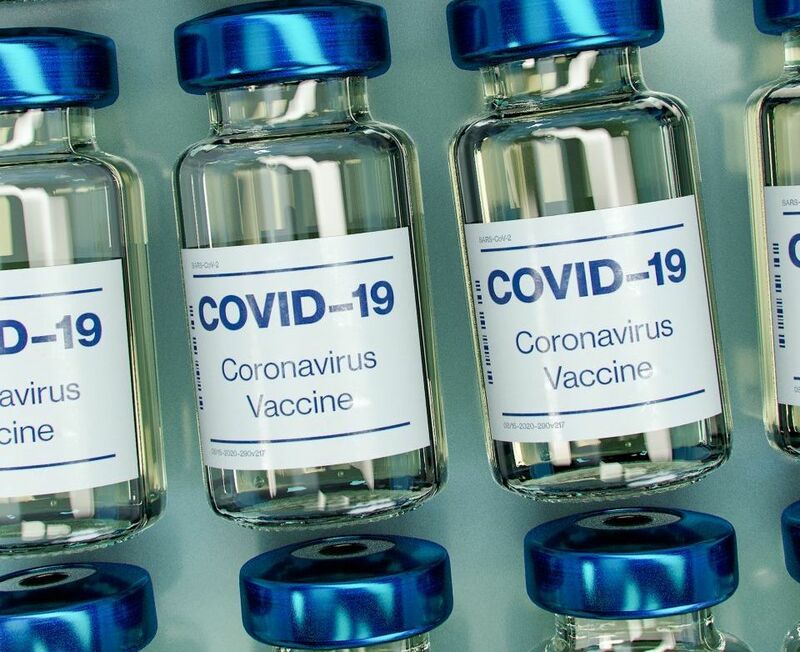
US stock markets delivered stellar returns in the first half of the year and the Nasdaq 100 ($IUXX) had its best first-half performance ever while the Nasdaq Composite ($NASX) rose over 31% and had the best start to the year in four decades. However, Pfizer (PFE), whose COVID-19 vaccine made the company a household name, recently fell to a 52-week low. Why is Pfizer stock going down and should you buy the dip now?
Pfizer’s revenues also spiked and almost doubled in 2021 as countries globally scrambled to buy its COVID-19 vaccine. However, sales of COVID-19 vaccines have since plummeted and so have Pfizer’s revenues which are expected to fall over 32% YoY this year. Analysts expect Pfizer’s earnings to also fall 49% this year but see them rebounding 4.9% in 2024.

Even Berkshire Hathaway (BRK.B) ditched Pfizer stock after buying a small stake in 2020. While the Warren Buffett-run company has since exited pharma and some bank stocks, it added more Apple (AAPL) shares in 2022. The iPhone maker reached yet another milestone when its closing market cap surpassed $3 trillion last month.
Some other factors added to Pfizer's stock slide, for example, last month it halted the work on its weight loss drug lotiglipron over safety concerns raised during its phase 1 clinical trials.
The company is however continuing with the trials of danuglipron, which is in a fully enrolled phase two clinical trial. It expects a late-stage program for danuglipron the by the end of this year and said that it is also developing a once-daily modified release version of the weight loss drug. Notably, Pfizer CEO Albert Bourla believes that an obesity pill could eventually generate annual revenues of $10 billion
With a year-to-date loss of around 30%, Pfizer is among the worst in the S&P 500 (SPY). To be sure, pharma stocks in general have looked weak in 2023 and the market rally has been led by tech companies – thanks to the artificial intelligence (AI) euphoria.
That said, Pfizer is also underperforming its healthcare peers in 2023 as the iShares Global Healthcare ETF (IXJ) is down only about 2.5% for the year.

Five reasons to buy the dip in Pfizer stock
While PFE stock has slid in 2023, here are the five reasons why I believe it makes sense to buy the dip in Pfizer stock.
- Pfizer has a decent product pipeline and is in the midst of an 18-month period where it expects to launch 19 new products.
- Pfizer has announced the acquisition of Seagen which would enhance its cancer care portfolio. It expects Seagen to add $10 billion in “risk-adjusted” sales by the end of this decade with “potential significant growth beyond 2030.” To put that in perspective, Pfizer’s Oncology business generated revenues of $12.2 billion in 2022.
- I believe that the worst of the slowdown would be over for Pfizer by the end of this year as the base year impact of high COVID-19 vaccine sales withers away.
- Pfizer has an attractive dividend of 4.6% which is three times the S&P 500’s dividend yield. I believe the stock is especially attractive for investors who chase high dividend names as pharma companies like Pfizer tend to have a stable dividend payout policy.
- Pfizer trades at a forward PE multiple of 11.1x which is below its historical averages. While the broader US stock market valuations are above their historical averages, PFE is among the rare names that trade at a discount to their long-term averages.
The stock looks near the oversold territory based on technicals also, as its 14-day Relative Strength Index (RSI) of 33.3% is quite near the 30% that signals that a stock is oversold.
PFE Stock Forecast: Analysts See Strong Upside
Wall Street analysts currently rate Pfizer’s stock a Moderate Buy:

Of the 16 analysts that cover PFE, 6 rate it a Strong Buy, 1 a Moderate Buy, 8 a Hold, and 1 a Moderate Sell.
However, in what’s reflective of Pfizer’s cheap valuation, the stock even trades below its lowest target price of $38. Last month, Credit Suisse also turned bearish on PFE and downgraded the stock from outperform to neutral, and lowered the target price to $40, from $47, which is again above its current prices. Pfizer’s mean target price of $48.73 is an upside potential of over 36% while the highest target price of $75 is 110% above the current prices.
Overall, while Pfizer faces several headwinds, I believe the risks are adequately priced at these price levels. The stock could outperform the markets in the coming months as beaten-down stocks play catch-up with tech names in the coming months.
On the date of publication, Mohit Oberoi had a position in: QQQ , SPY , TDOC , DIS , BRK.B . All information and data in this article is solely for informational purposes. For more information please view the Barchart Disclosure Policy here.






